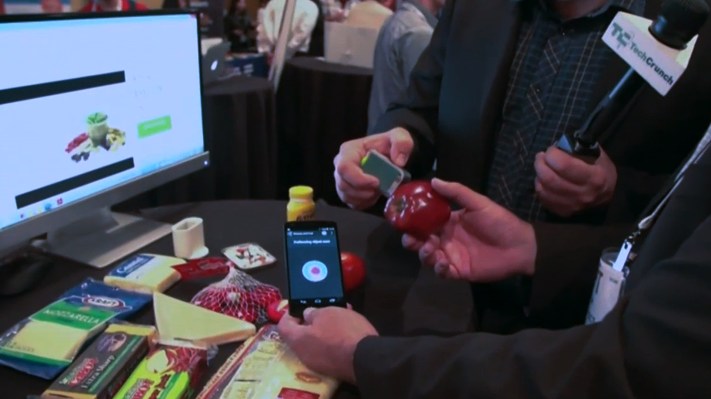Like most small products with a cult following, SCiO has its fans and detractors. Those detractors took to the Internet recently to complain that the handheld molecular scanner, which raised $2.5 million in 2014, still hasn’t shipped. The result? Negative press and plenty of Tweets.
I asked SCiO’s creator, Dror Sharon, what was going on with the device and when it would ship and, more important, whether it would ever properly scan an M&M.
TC: When are you shipping all the units?
Dror Sharon: To date we’ve shipped more than 5,000 units and are on track to ship the rest to backers by early next year.
TC: What’s the hold up?
DS: Since we started manufacturing and assembling SCiO units, we’ve hit several obstacles, including parts that came that didn’t meet our standards. The SCiO sensor is complicated technology and we have a high level of quality control. During the manufacturing process, we also iterated on the design of the SCiO sensor itself. This iteration made SCiO more accurate and more sensitive, and thus required more time to engineer and manufacture.
TC: What would you guys have done differently?
DS: We have no regrets.
We are building a company, a worldwide developer community and user base, and we are tackling a very complex technological challenge. We understand that there is a small number of community members who are upset with the delays. We take their complaints and comments very seriously and our support team reaches out directly to everyone who comments or asks questions on our Facebook and Twitter channels. In cases where backers have requested refunds, for example, we have fulfilled those requests even though there is no legal requirement for a Kickstarter campaign to provide refunds when requested.
Folks who are upset about delays – we offer them refunds, but the vast majority of them do not take the refund. Most are patient, understand what we are building, and prefer to wait for their unit to arrive. Some of the comments on our FB wall are by people that got refunds or were never part of the SCiO community to begin with.
TC: What can the product scan right now, out of the box?
DS: Out of the box, SCiO can scan food and pills. There are applets for scanning cheese, yogurt, and other dairy products; fruits, vegetables and fresh produce; and raw chicken, pork, beef and other meats for their nutritional values. It can scan over-the-counter pharmaceutical pills. It can act as a produce selector by measuring the sweetness of tomatoes. There are a number of further apps that are available to backers as beta versions – these are not complete but provide basic functions and a glimpse into the future of SCiO; for example, measuring one’s body fat.
Lastly, users can “teach” SCiO using the Workshop app creator. You scan different materials, press a button, and “presto!”: a machine learning model is created in realtime that can now distinguish between them. It is a bare bones slimmed down version of the full blown SCiO Lab, our development kit. We got really good feedback on this feature, making SCiO fun and educational. It extends the functionality beyond the initial (limited) databases.
TC: When will the device be able to scan an M&M properly?
DS: We have no plans for candy or M&M specific scanning functionality, other than cocoa levels in chocolate. The pills app is not meant to scan chocolate, the scan was meant as a funny poke. I understand you’re making a joke here. However, we are seriously working on specific apps that solve real-world problems for consumers and industry. For instance, the beta app that can measure body fat percentage with one simple bicep scan. We are working with a number of Fortune 2,000 companies on industrial applications to deploy industrial IoT solutions that address real problems in the areas of agriculture, oil and gas, gemstones, cosmetics, pharmaceuticals, and much more.
We have several developers working on companies based on the SCiO platform.
Finally, several leading consumer electronics companies are in discussions with us to embed the sensor inside smart consumer appliances. We plan to share more about these development when appropriate to do so.
